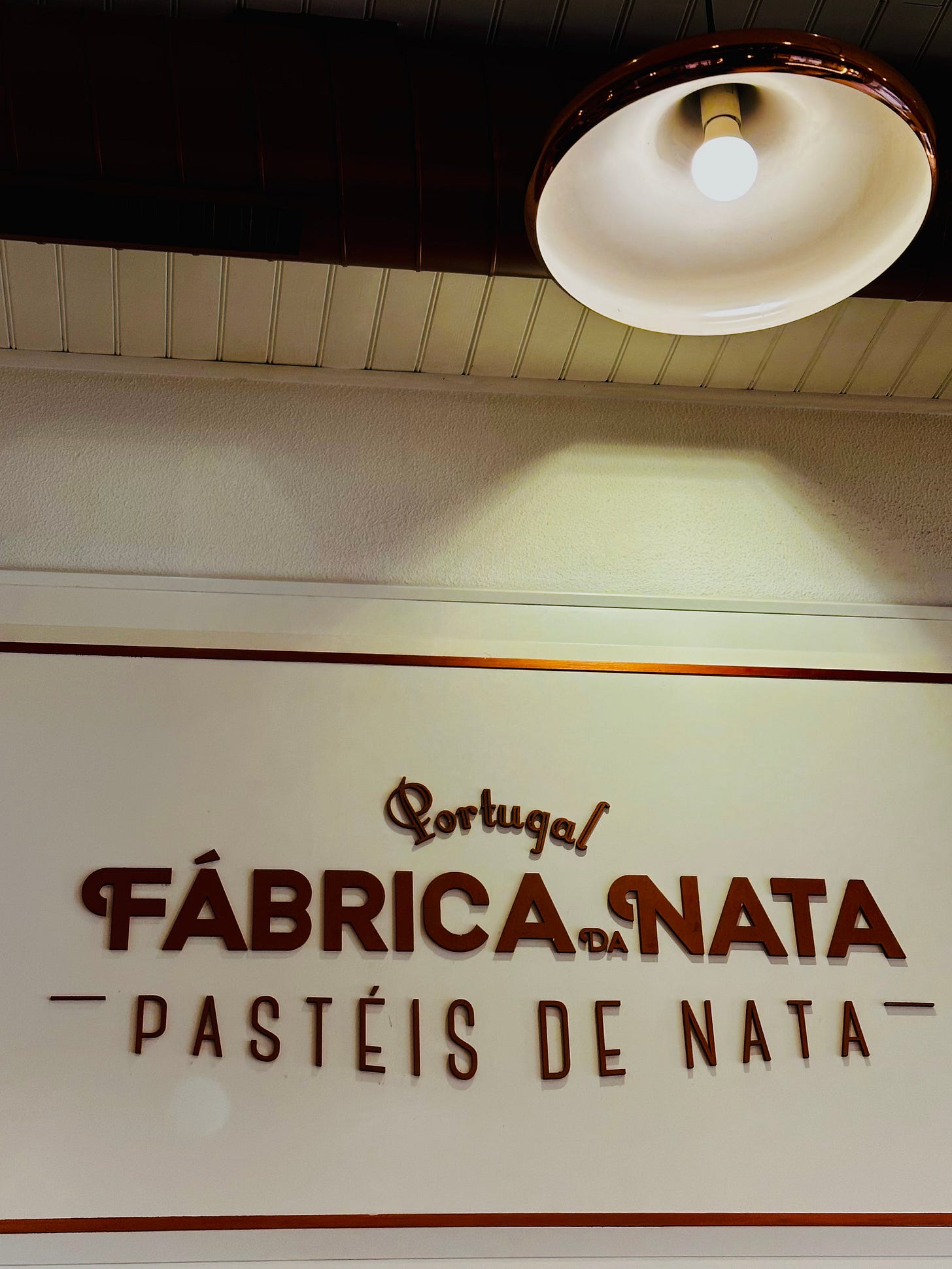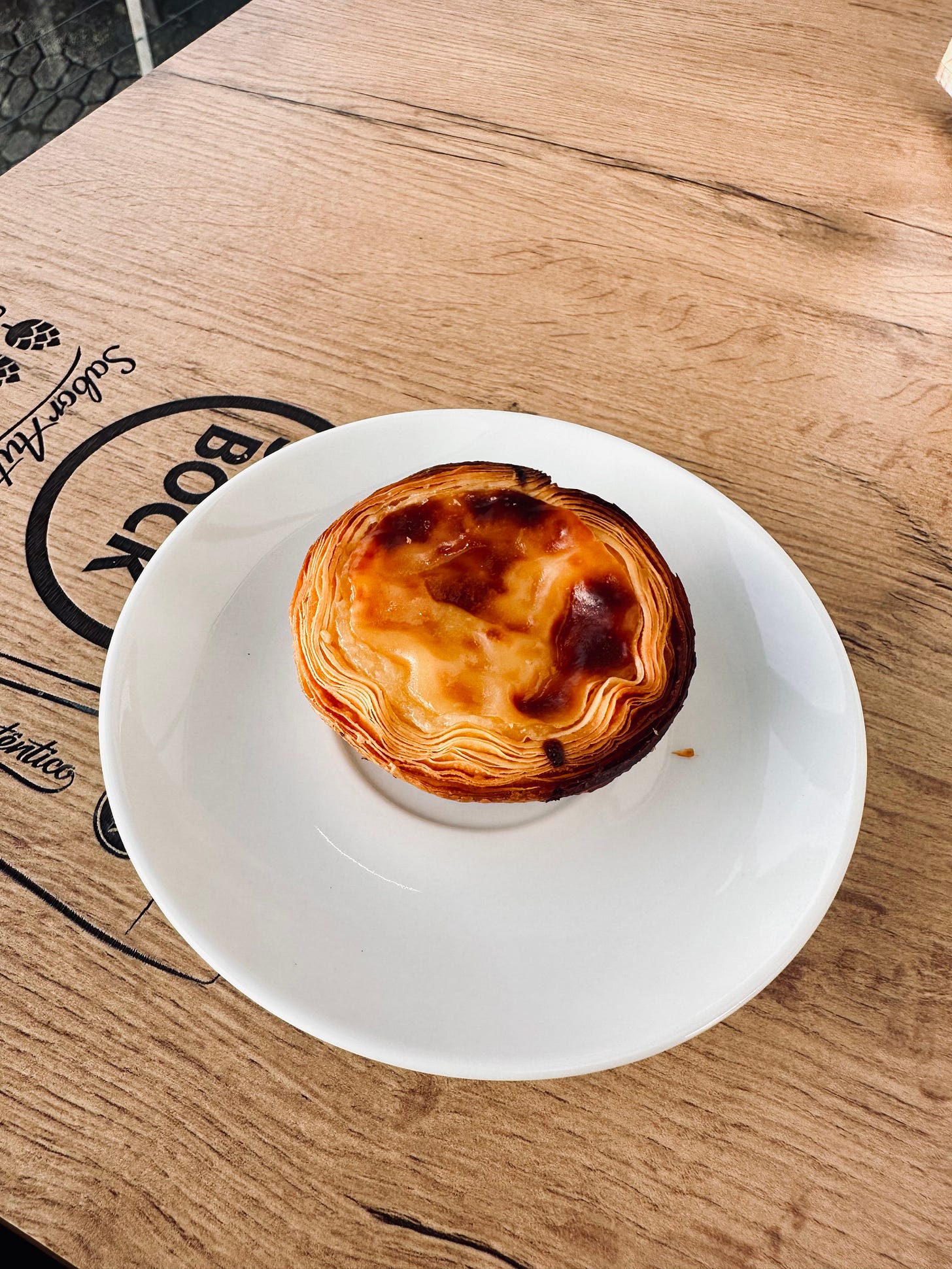🎧Listen: get in, friend, we're going to Nando's 🌶️
Episode 8 of Beyond Hyphenation: A Deep History of Diasporas
“You were just in Portugal, what do you mean you’ve never had Peri-Peri??”
Fresh off the plane from Lisbon, I was walking down a busy street in London with a friend when he asked me this question.
“But you’ve been to Nandos before right?”’
My face:
He stopped walking. He had an incredulous look on his face.
“Shae, you haven’t been to Nandos???”
Filled with laughter, I kept walking. I turned around and encouraged him to keep walking too. I didn’t want him making a scene on these London streets 😂.
Needless to say, we had other plans, but we went to Nandos for dinner! After we sat down, I took a moment to admire the art on the wall. As I looked closer at one piece in particular I recognized the style of a Joberg artist I met while I was living in South Africa many years ago. This was my first time at Nandos, but I was certain this wasn’t just a Portuguese restaurant.
Naturally, being the curious historian I am, I looked up the history of Nandos. In 1987, two friends were sitting in a Portuguese restaurant in Joberg when they got inspired to create a fast-casual restaurant serving chicken using a spice they had just eaten. It was called Peri-Peri which I would soon learn has a history that traces back to the Portuguese empire and the diasporas it created.

Welcome back to Beyond Hyphenation: A Deep History of Diasporas. It has been such a joy researching and writing this summer series for you all! Summer is coming to a close and we have just a few more episodes left. Stay tuned for an important announcement this fall to celebrate the one year anniversary of this newsletter 👀
Historical Debate Over Peri-Peri
Piri-piri peppers (Capsicum frutescens) are believed to have originated in the Americas. However, how they came to be cultivated in southern Africa seems to be up for debate amongst historians. Some sources say they were brought to Africa by Portuguese explorers during the Age of Discovery in the late 15th and early 16th centuries. As the Portuguese established trading posts and colonies along the African coast, they introduced various crops from the New World, including chili peppers, to the African continent.
In Africa, the chili peppers found fertile ground, especially in Mozambique, where the climate was ideal for their cultivation. It was here that the peppers were adapted, cultivated, and integrated into the local cuisine.
Other sources say Portuguese explorers found the African Bird Eye Chilli Peppers upon arrival in Mozambique. As Portuguese sailors and settlers moved across the globe, they carried the piri-piri pepper with them, further spreading its use. In places like Brazil, Angola, and Goa, piri-piri became an integral part of the local cuisines, often adapted to suit regional tastes and ingredients.
While the origins of the pepper may be up for debate, in contemporary times, piri-piri has gained international recognition, especially through the global expansion of restaurant chains like Nando's, which specializes in piri-piri chicken. While Nando's roots are in South Africa, the chain has popularized the flavor worldwide, often branding it as "peri-peri."
The name "piri-piri", often written as “peri-peri”, itself is derived from the Swahili word "pili pili," which means "pepper."
The African Influence On Portuguese Culinary Traditions
When studying colonial histories it can be easy to just focus on the impact of European colonialism on African cuisine. However, what about the history of the impact of African people and traditions on Portuguese cuisine itself?
While I was in Portugal, I had a wide range of food from Lagos to Lisbon that led me down an interesting path toward discovering how Portugal’s colonial past impacted its culinary scene.
In Lisbon, the presence of enslaved Africans dates back to the 15th century. By the 16th century, it's estimated that 10% of Lisbon's population was of African descent. These individuals, brought primarily from West and Central Africa, inevitably influenced the city's culinary landscape.
The influence of African ingredients extended beyond the realms of savory spices and dishes. In Lisbon's convents, where nuns were famed for their confectionery, African sugar produced by enslaved people from São Tomé and Príncipe became the foundation for Portugal's beloved doces conventuais. The pastel de nata, that iconic custard tart, owes its creamy sweetness to the sugar plantations worked by enslaved Africans on these Atlantic islands.
But it wasn't just ingredients that Africans brought to Portugal. Cooking techniques, too, crossed the ocean. The method of slow-cooking in clay pots, common in many Portuguese stews, can be traced back to West African culinary traditions. In Lagos, the technique of grilling fish over open flames, a staple of the region's beach restaurants, bears a striking resemblance to methods used along the coasts of Angola and Mozambique.
After delving into the rich tapestry of Portuguese cuisine, it becomes clear that the story of piri-piri and other culinary staples is more than just a tale of European exploration and colonization. It's a story of cultural exchange, resilience, and the enduring influence of African traditions on Portuguese soil. The chili peppers, slow-cooked stews, and sweet confections we associate with Portugal today are, in many ways, a legacy of the Africans who, despite being brought to Europe under the harshest of circumstances, left an indelible mark on its culinary identity.
Today, as we savor a bite of piri-piri chicken or indulge in a pastel de nata, we are not just tasting a dish; we are experiencing a centuries-old story of survival, adaptation, and cultural fusion. The next time you sit down to enjoy one of these dishes, remember the complex history behind each flavor—the journeys, the hardships, and the incredible resilience of the African people who, in many ways, shaped what we now know as Portuguese cuisine.
Conclusion
So how would I rate my first Nando’s experience? Maybe a 7/10.
What’s more important is the historical legacies of Portuguese colonialism, but also African influence on Portuguese culinary traditions that demonstrate the complexities of living in the diaspora and beyond the hyphenation of two nations.
Until next week,
📚Sources
"Culinary Cultures of Europe: Identity, Diversity, and Dialogue," edited by Darra Goldstein and Kathrin Merkle
David Birmingham's "A Concise History of Portugal"
Sidney Mintz,"Sweetness and Power: The Place of Sugar in Modern History”
“Where is Nandos and Piri-Piri Chicken From?” Vice News https://www.vice.com/en/article/nandos-piri-piri-chicken-origin-portugal/
Saunders, A. C. (1982). A Social History of Black Slaves and Freedmen in Portugal, 1441-1555. Cambridge University Press.
“The History of Peri-Peri” https://africandreamfoods.com/blogs/articles/the-history-of-peri-peri
Nandos, “Our Story” https://www.nandos.com/heritage/our-story/






